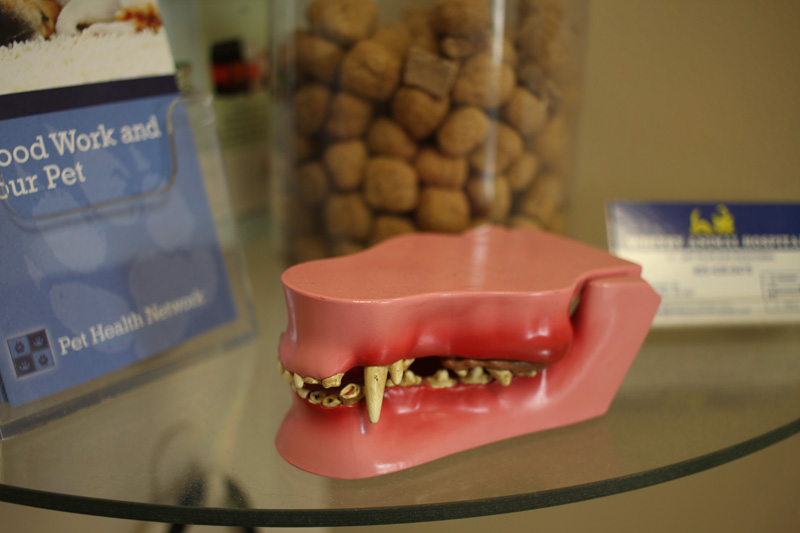3050 Garden Street, Unit 112B
Whitby, ON L1R 2G7
Mon-Fri: 8am - 6pm, Sat: 9am - 1pm, Sun: Closed
Menu
3050 Garden Street, Unit 112B
Whitby, ON L1R 2G7
Mon-Fri: 8am - 6pm, Sat: 9am - 1pm, Sun: Closed

Why be concerned about teeth?
Significant gum and dental disease can be caused by plaque and tartar build up. Plaque is an invisible layer on the surface of the ennamel that The establishment and accumulation of plaque and tartar allows inappropriate numbers of bacteria to grow in the mouth. This can cause damage to both the teeth and gums and also to more distant parts of the body such as the heart and kidneys (via the blood stream).
Dental disease can also cause your pet significant pain and discomfort.
What are the signs that indicate my pet’s mouth needs attention?
A proper dental care program starts with an oral exam. This exam allows the veterinarian to identify areas of concern and make recommendations. While dental disease and gingivitis are common, other diseases can occur in the mouth. Tumours and masses can arise and pets can develop a number of other painful conditions. An oral exam should be performed prior to beginning a home care program to ensure that there are no pre-existing conditions that would make a home care program uncomfortable for your pet.
Once it has been determined that you and your pet are ready to start with home care, your veterinary team can help you determine which options are best for your pet. Look for products that have been awarded the VOHC (Veterinary Oral Health Council) seal of acceptance. These products have been tested to meet required standards for tartar and plaque control.
A professional dental cleaning may be needed to properly remove plaque and tartar, to restore your pet’s dental health. Dental home care can easily begin after a professional cleaning to help maintain your pet’s oral health.
Dental Home Care
Tooth brushing is the single most effective tool in maintaining dental health and preventing dental disease. Both cats and dogs benefit from having their teeth brushed. Special non-foaming toothpaste has been formulated that is flavoured to increase acceptance by pets. Several varieties of toothbrushes exist including rubber finger brushes and brushes with ultra soft bristles.
Introducing your pet to tooth brushing should be done gradually and preferably at a young age. Ask us for a demonstration of proper brushing techniques and tips to help make the process easier for you and your pet. Make sure that your pet receives an oral exam before beginning to brush their teeth for the first time. Brushing sore or diseased teeth and gums can be painful for your pet!
There are many dental rinses, gels and water additives available for cats and dogs. The goal of these products is to delay tartar formation, reduce halitosis (bad breath) and generally improve the condition of the pet’s mouth. Talk to us about which of these products would be best for your pet.
There are also multiple chew products available. These products are designed to be chewed by the pet. The abrasive action of the chewing contributes to helping remove plaque and tartar.
Care must be taken when purchasing chew toys. Some chews are hard enough to cause tooth fractures, and some may cause stomach upset or intestinal blockage if swallowed.
Dental treats are food items designed to be eaten by pets. The chewing action helps to reduce plaque and tartar. Beware, some of these treats are high in calories!
Specifically designed diets are made with your pet’s dental health in mind. These foods are usually larger kibbles that require more chewing than a regular kibble. Some foods are also coated with products that slow plaque formation.
Managed by StableWP